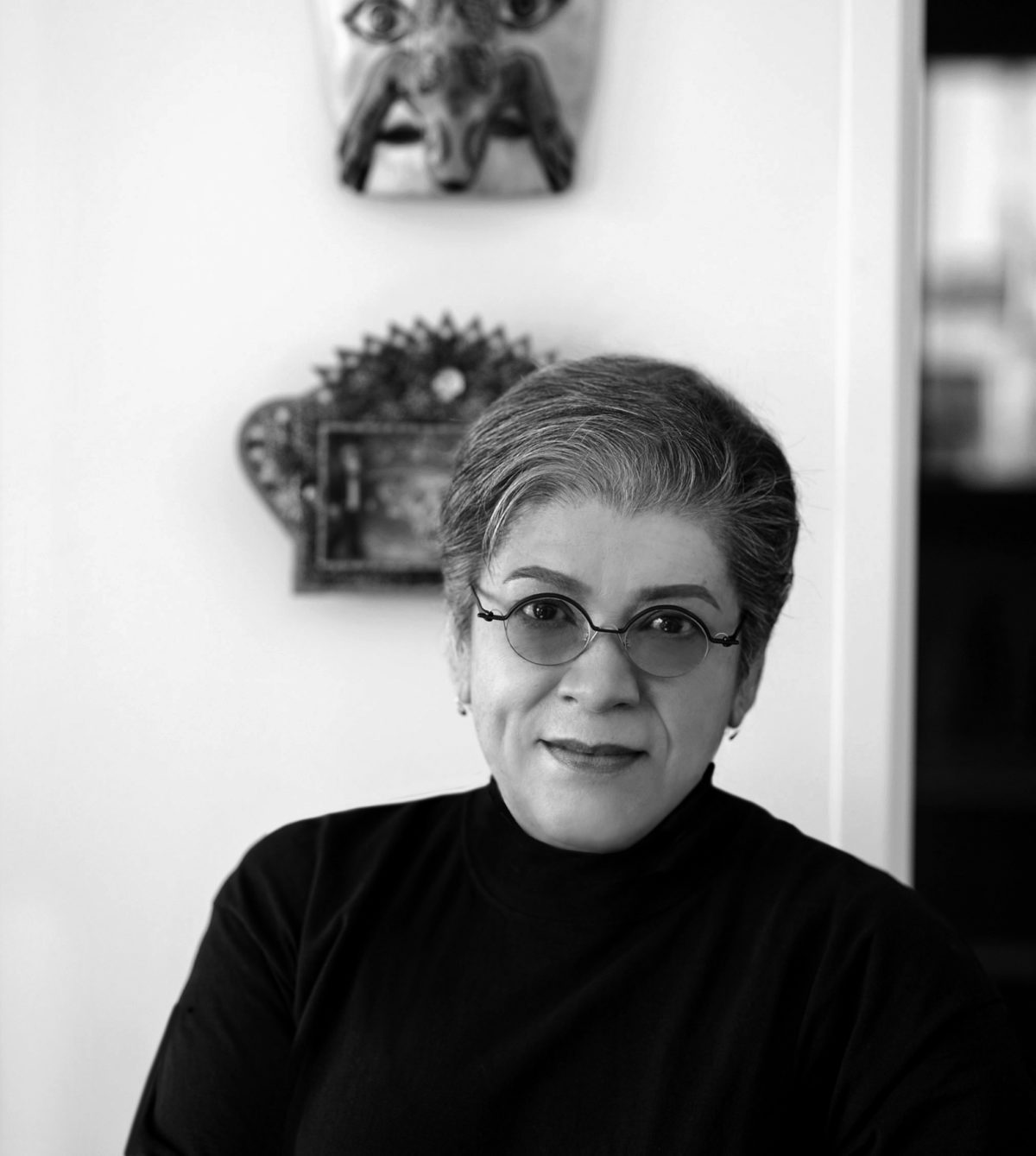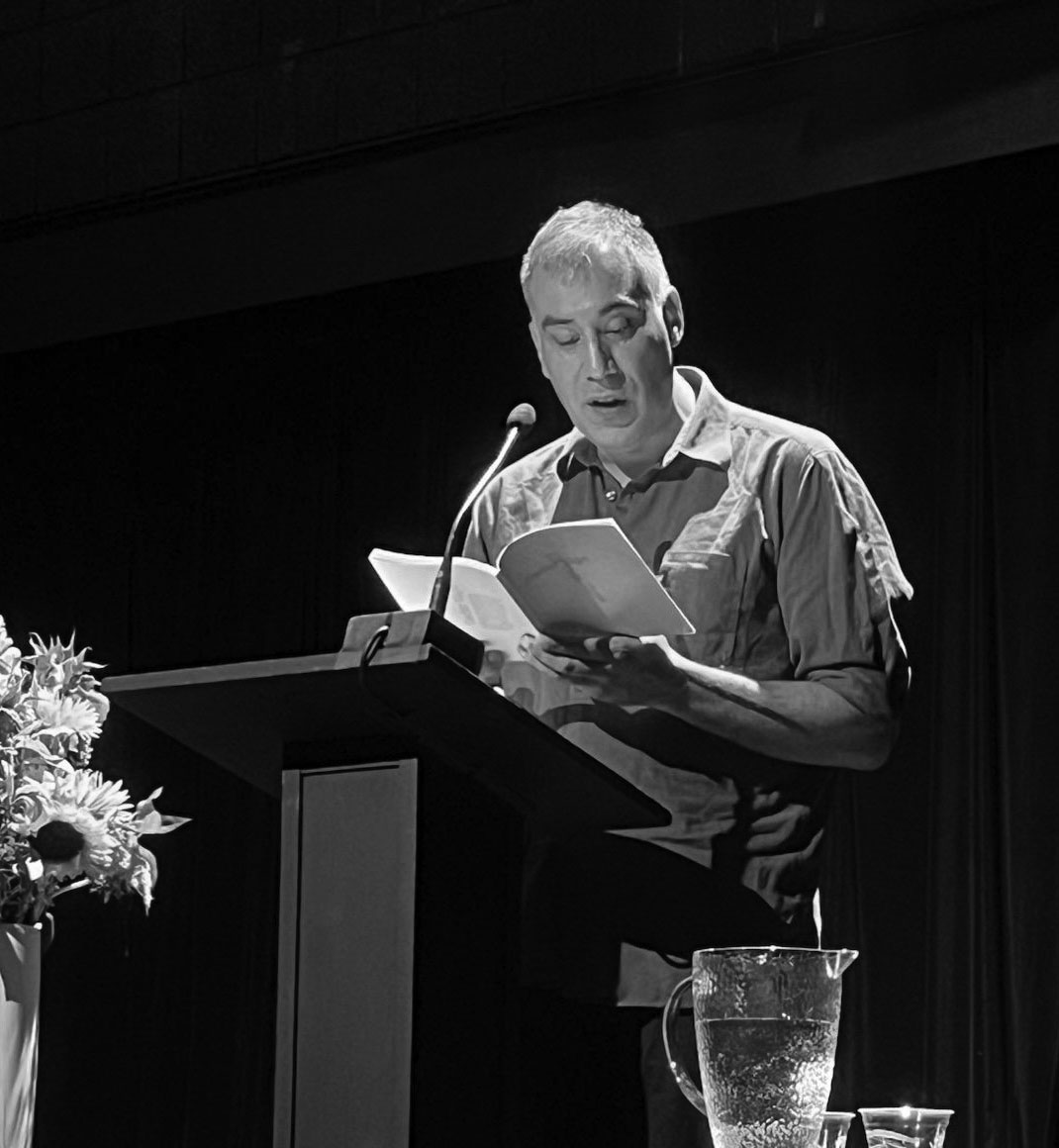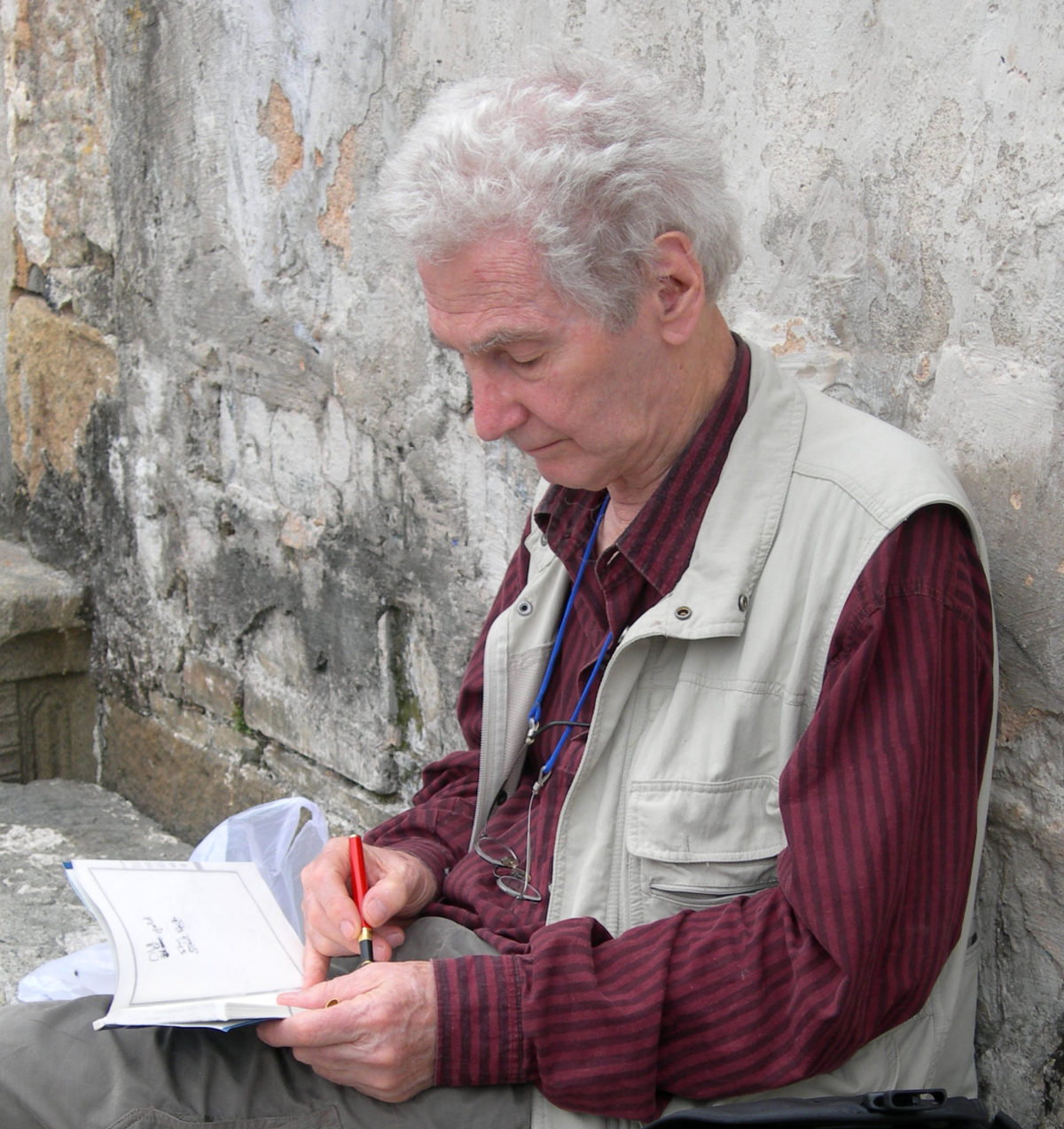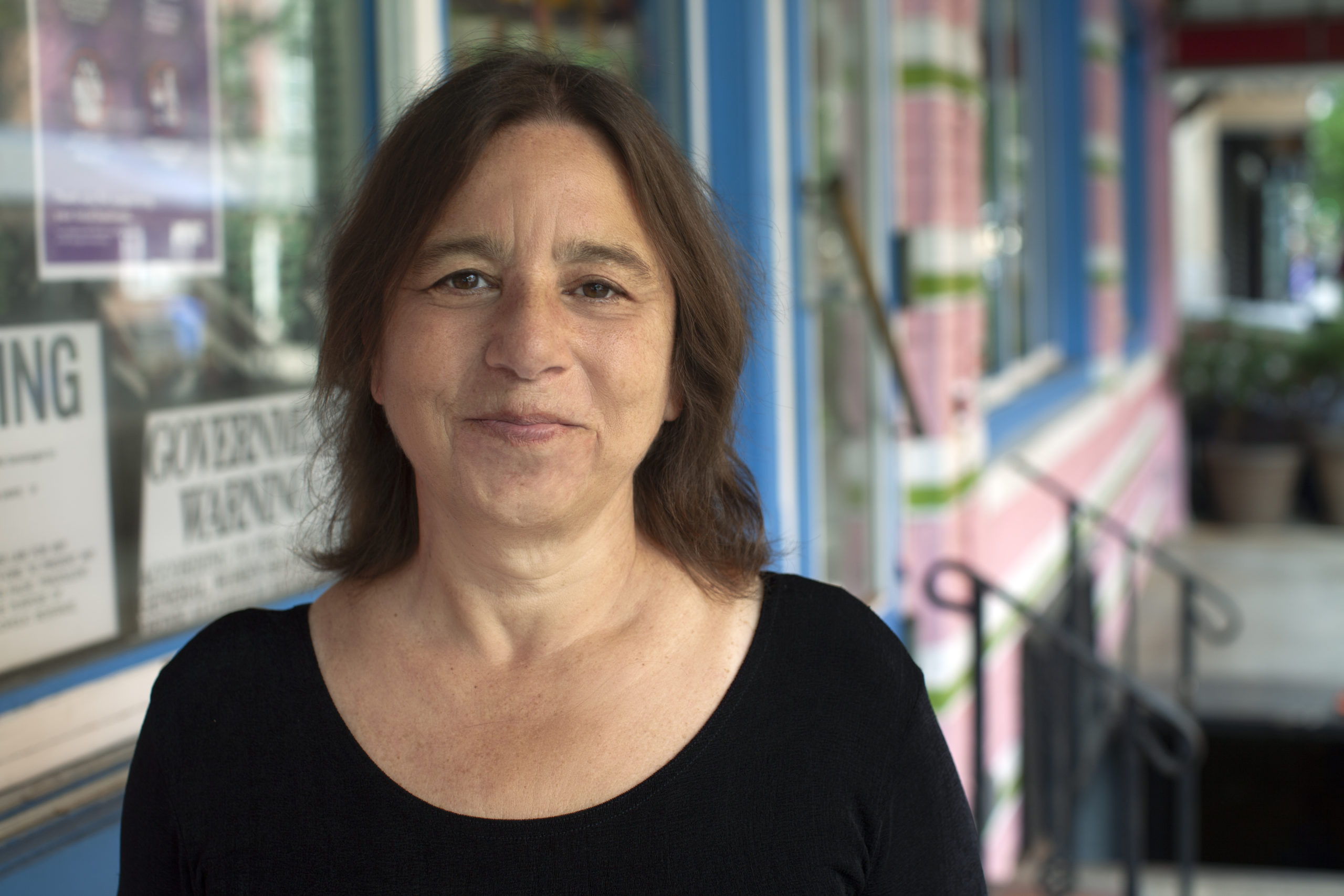
When I spoke to Sarah Schulman last December, an ice storm had turned Seattle into an urban rink and cars were hydroplaning down the hills in slow motion. Of course, neither of us had to go anywhere to connect. Sarah joined me via Zoom from her apartment in Manhattan’s East Village where she was preparing for a reading of her new play, Free Ali! Free Bob!
“It’s an update of a Chekhov play,” she said. “This idea of the provincial bourgeoisie who are very comfortable on top of their tiny world and dream of going to Moscow, but they never go.” The play probes the “gay art clique phenomena.” “I travel a lot,” she said, “and every town has a gay art clique and they rule with an iron glove.” She was also gearing up for a workshop of her play Roe v. Wade and a musical adaptation of her novel Shimmer. And it was in the land of the novel—Schulman is, first and foremost, a novelist—that our conversation began. From there we covered lesbian publishing, the professionalization of the artist, and other markers of the postwar milieu. This interview was edited and condensed for clarity.
Sarah Schulman is the author of more than twenty works of fiction (including The Cosmopolitans, Rat Bohemia, and Maggie Terry), nonfiction (including Let the Record Show: A Political History of ACT UP: New York 1987-1993, Conflict is Not Abuse, and The Gentrification of the Mind), and theater (Carson McCullers, Manic Flight Reaction, and more), and the producer and screenwriter of several feature films (The Owls, Mommy Is Coming, and United in Anger, among others). Her writing has appeared in The New Yorker, The New York Times, Artforum, and many other outlets. She is the Ralla Klepak Professor of English at Northwestern University, a Fellow at the New York Institute of Humanities, the recipient of multiple fellowships from the MacDowell Colony, Yaddo, and the New York Foundation for the Arts, and was presented in 2018 with Publishing Triangle’s Bill Whitehead Award. She is also the cofounder of the MIX New York LGBT Experimental Film and Video Festival, and the co- director of the groundbreaking ACT UP Oral History Project. A lifelong New Yorker, she is a longtime activist for queer rights and female empowerment, and serves on the advisory board of Jewish Voice for Peace.
DM: You published your first novel, The Sophie Horowitz Story, in 1984. It’s a detective novel. But I’m wondering if it’s a parody of a detective novel.
SS: At that time there were very few queer detectives because it was a popular cultural genre, and most lesbian fiction was pulp or underground or coded. So the idea of taking a popular cultural form and inserting a lesbian character was a brand new idea and sort of arrogant. It was like saying, “Oh, we don’t just have to be in these marginal forms. We can also be in popular cultural forms.” I think that was about the third lesbian detective novel. The two previous ones were Angel Dance by M. F. Beal, which is obviously a pseudonym, and Murder in the Collective by Barbara Wilson. So it started out as a radical impulse and got co-opted very quickly because the industry was more willing to accept genre fiction with lesbian protagonists than mid list or literary fiction. And that is still true today.
The Sophie Horowitz Story was published by Naiad Press.
Naiad was started by Barbara Grier, who was the book critic for The Ladder, the magazine of the Daughters of Bilitis. It published pulp—romances and things like that—and serious books, like Patricia Highsmith’s The Price of Salt, which had been published under a pseudonym. It was based in Tallahassee, Florida, and really the only option for me. That first book had about 60 rejections and most of them were because of the lesbian content. I had letters saying, “Can’t you change the sexuality of the protagonist?” One guy wrote me and said, “This book would offend librarians,” which is funny because the Gay Librarians Association was the very first gay professional organization. So this guy was out of touch with librarians.
Within five or ten years there were hundreds of gay and lesbian detective novels and very few gay and lesbian literary novels. And this has been true all along. All of the forms that I work in don’t allow the content. You can have performance art with a lesbian protagonist, but getting productions for full character plays, the “blue ribbon” format, with lesbian adults is almost impossible. In books and film and on stage, the genre is the place where people are allowed to live. But in 1982 when the book was written—it was published in ‘84—that was unknown.
So there’s this character, Sophie Horowitz, a Jewish lesbian reporter for the Feminist News. And she’s tracking down a couple of radical feminists who have robbed a bank—
They’re not radical feminists. They’re sixties people. This is about the generational shift from the Sixties movement—the Weather Underground, the Students for a Democratic Society (SDS), and women of that generation—to the women of my generation who were feminists in a different way. It’s about the generational conflict between the two.
Was the impetus to write about that generational conflict?
The book is loosely based on a group of people who came out of the Weather Underground. Some of these characters correspond vaguely to historical figures.
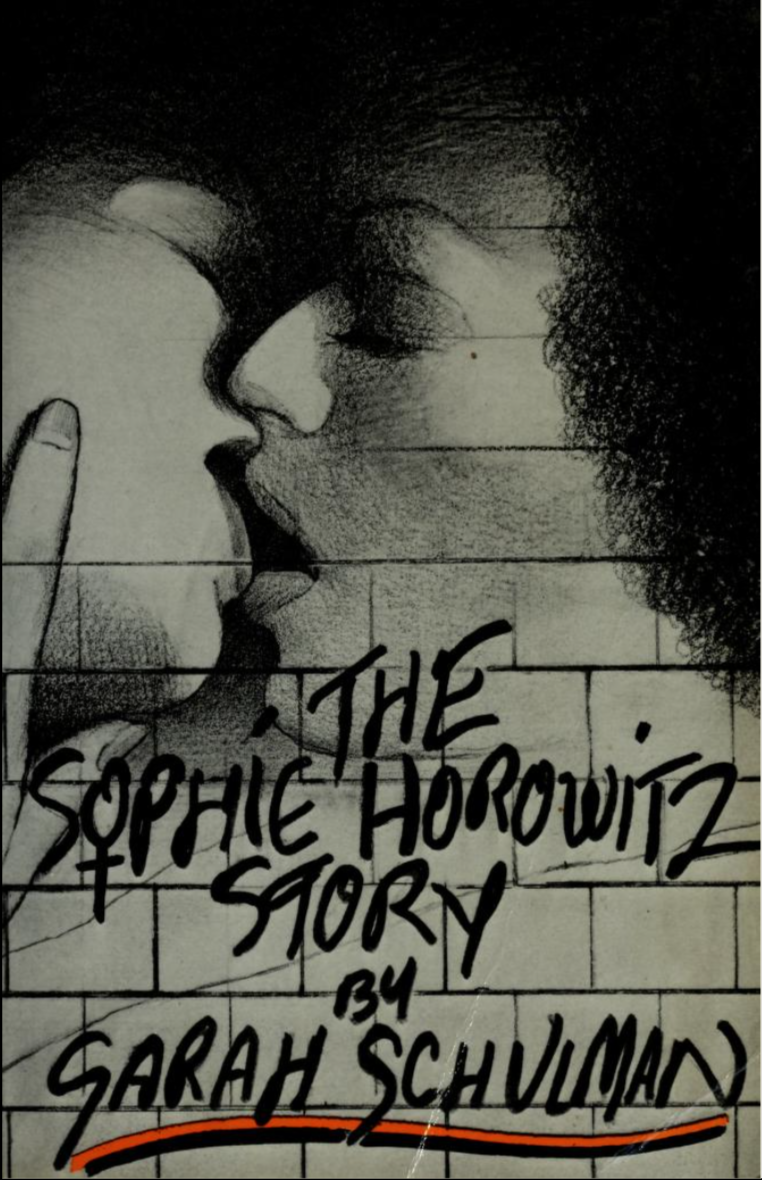
How would you describe the American publishing scene for women and lesbian writers in the 1980s?
Well, it was better than it is now.
Better?
Definitely.
That surprises me. What do you mean by that?
It was dynamic. There was a rich and complex small press world of feminist and gay and lesbian presses that were selling quite well and had an impact on the culture. Their books were very widely read and created an “alternative” literary world. And there were a couple of openly lesbian editors in commercial and mainstream presses who were committed to publishing sophisticated, formally inventive lesbian literature.
Neither of those things exist now. The lesbian literature published today by corporate presses is usually a variation of a well-tread, well- worn format that preexists. But there’s very little development of the literature itself. And, of course, the “alternative” sphere doesn’t exist at all.
That gap is the thing. It’s true for plays, for movies, for television, for all kinds of art—except poetry. That gap is where the literature lives between what the people are creating and what the system is allowing the public to have.
Would you say that the fiction being written today from a lesbian perspective or with lesbian characters is stagnant, or not inventive?
We have no idea what’s being written. All we know is what’s being published. And what’s being published is, for any marginalized group, never representative of what’s being written. Even me. I’m like this bourgeois white woman in my sixties now—I have a professorship and all that stuff—and there’s no one like me in American publishing who is acquiring, even now. That gap is the thing. It’s true for plays, for movies, for television, for all kinds of art—except poetry. That gap is where the literature lives between what the people are creating and what the system is allowing the public to have.
You were born in New York City in the postwar boom fifties and you grew up in the sixties and seventies. Was the “alternative” gap bigger during that period of time?
The film critic Vito Russo talked about how even negative depictions of queer people gave the gay audience the knowledge that there were others, that they were not alone, even if the representations were distorted. I would say the books that I got some kind of lesbian subtext from were not intended for that purpose. I was born in 1958, which is 13 years after the end of the Holocaust, and every girl, every Jewish girl of my generation was given the Diary of Anne Frank. Everybody. They gave it to us with an intention. But I think that the actual consequence was that we got the message that girls could be writers. My whole generation wrote diaries. Of course, later I found out that there was lesbian content in her book that had been censored out. Maybe that was sensed somehow.
The other book was Harriet The Spy by Louise Fitzhugh, which is still in print. It’s for girls, but it’s about a tomboyish girl who is a writer. Fitzhugh was gay, and she told the truth about the people around her and they punished her for it. This was a very popular book. Those would be the beginning of my exposure to lesbian literature. But the first real lesbian book I ever read was Rubyfruit Jungle by Rita Mae Brown. It was published by a women’s press in California called Daughters Incorporated. It was part of that sort of underground alternative culture. Later it was bought by Bantam. There was a commercial paperback edition.
Is there a connection between Rita Mae Brown and the name of the character, Rita Mae Weems, in your novel Rat Bohemia?
Well, there’s also Carrie Mae Weems, the prominent Black woman artist. I merged them into one name.
What do you remember about the Lower East Side in the seventies and eighties—what sights, sounds, and smells?
It’s hard to answer something like that because I’ve lived in or frequented this neighborhood for 64 years. What do you want to know?
I’d like to get a sense of what’s disappeared, of what you have written about as having disappeared.
The most important thing is the economy has changed. The city is too expensive and that’s why there are so many homeless people here. There are a lot of empty storefronts and empty hotel rooms and empty offices and thousands and thousands and thousands of homeless people with nowhere to go. The seizing of the city by real estate is really the difference. Anything else is a consequence of that.
When you have a gentrified city, the kinds of people who can live there tend to be from wealthier backgrounds. They have a more intact relationship to capital. There’s space, but the people who are using it may not represent difference. They may already be mass produced in their thinking…. Now there’s a selection process where people get professionalized and “branding” dominates everything. It’s detrimental. It homogenizes form. It homogenizes influences.
In your book The Gentrification of the Mind: Witness to a Lost Imagination, you argue that this was a direct consequence of AIDS, that all of these vibrant, queer countercultures and spaces disappeared when people died of AIDS.
That’s a tiny argument inside this book. I’m just trying to explain that what makes cities great is urbanity, and urbanity means difference. People who live there are aware that they are different. They see that other people are different. And this is why cities produce political movements and art ideas for the world. All the great political movements of women’s liberation, Black power, gay liberation do not come from the suburbs. These movements come from cities and, when you homogenize the city, that can get lost. Cities stop being places that produce new ideas for the world because the very nature of difference—difference in relationship to each other—is removed. You have a gentrified dominant culture that codes itself as progressive or hip or whatever. But actually it’s quite boring because it’s very mass produced.
In the book you argue that with the disappearance of art spaces where people could hang out and make things, the art and culture became commercial and less challenging. Is that right?
Not really. Let me say it a little differently. There are two elements that you’re bringing up: the space and the people. When real estate gets seized and artists or immigrants or people with new ideas who are not wealthy cannot live or work, then they can’t be there or they can’t be themselves. But when there is space available, who can access it? When you have a gentrified city, the kinds of people who can live there tend to be from wealthier backgrounds. They have a more intact relationship to capital. There’s space, but the people who are using it may not represent difference. They may already be mass produced in their thinking.
Part of it is professionalization. When you have an artist—what is an artist? Let’s start with that. I would say my definition is a person who makes art, who thinks about art, who looks at art, who talks about art. That’s an artist. You’re involved in some kind of discourse with other people and with yourself. But now there’s a selection process where people get professionalized and “branding” dominates everything. It’s detrimental. It homogenizes form. It homogenizes influences. It creates networks of power that give people access because they’ve been branded in a certain way. Artists are about individual voice, so it’s counter-indicated to actual art-making to have everything be mass produced and highly selected.
So then what is interesting is what happens underneath the professionalization: the inventiveness, the reinventing of language that the artist is responsible for in alternative spaces. Only there are fewer alternative spaces now.
I’m going to have an interesting experience right now. I taught at the City University of New York for 23 years and now I’ve gone to Northwestern in Chicago, which is a private university. I’m having this shift from open admissions, where anybody with a GED, anybody with a high school diploma could be in my class, to a highly elite, highly selected student group where we take four out of 300 people. I’m experiencing this as evidence that open admissions is better.
Of course, sometimes things that are rewarded are actually good. But usually something is rewarded because it fits the needs of the apparatus that controls the reward system. They’re marketing themselves with who they reward or what they reward. But just walking into a room where everyone in your writing class is there because they have a high school diploma, I think it’s better for the culture. That’s the problem with this reduction process. It makes being heard almost impossible. Now, you started by talking about the alternative publishing of the seventies and eighties. That was a subculture. But subculture is hard to build in a reward economy. Now most marginalized people learn about themselves from corporate media. It’s complicated. It’s less visceral.
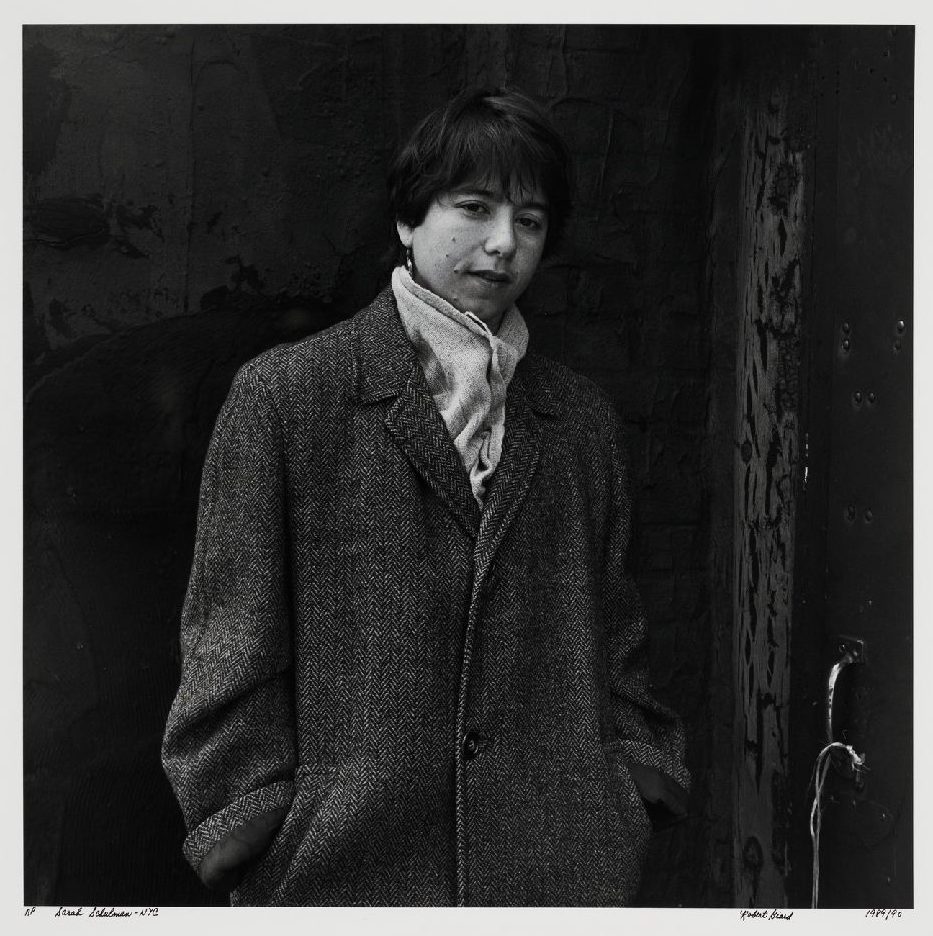
Now you’re back in Chicago as a teacher, but you studied at the University of Chicago in the seventies and—
I dropped out. I was not a successful student. And then I went to City University in New York. It took me a long time to get my BA and I finally got it from Empire State College.
You published your second novel, Girls, Visions and Everything, in 1986. It has a great first line: “Lila Futuransky always knew she was an outlaw, but she could never figure out which one.”
The title comes from a Jack Kerouac novel. I was born on 10th Street and I live on 9th Street. Our local bookstore was 8th Street Bookshop. It had all the Beats. When I was very young, I heard Herbert Huncke give a reading at St. Mark’s Poetry Project. I was always thinking about the Beats. They were so male, right? So I guess the idea of Girls, Visions and Everything was, What if you’re a gay girl and you’re going on the same adventure? Well, it’s totally different because just going outside is so much more dangerous.
The protagonist, Lila Futuransky, carries a copy of On the Road in her back pocket. Did the Beats influence your own writing?
I think so. The whole book is a reaction to reading their books. But it’s so long ago. The weird thing is I’ve published 20 books and written more than that, and I don’t re-read them unless they’re reissued. Right now Shimmer is being reissued. So I have to re-read it to write an introduction. Girls, Visions and Everything has never been out of print. I’ve never reread it. It’s hard to remember what I was thinking at the time.
What about this idea of bohemia? Henri Murger wrote, in the introduction to Scènes de la vie de bohème (Scenes of Bohemian Life), that “Bohemia only exists and is only possible in Paris.” He was wrong, surely.
I was very exposed to that as a kid. My father’s best friend wore a beret and he was the fifties beatnik guy who played chess and taught me how to play chess and how to play the recorder. I remember being a kid with my grandmother and seeing hippie runaways in the Village, dressed in black velvet clothes and barefoot with their faces painted. The hotel across the street from our apartment was called the Albert Hotel, and it had a lot of trans. Bohemia is something I was always aware of.
In those days, as a young person in New York, you could run around wherever you wanted. There were no helicopter parents. We got train passes when we were in first grade, so we could go anywhere, and we did. I could discover whatever I wanted, and bohemia has been there since I was born. It’s always been part of my landscape.
Now, Vivian Gornick, who’s someone I respect enormously, wrote a bad review of Rat Bohemia in the Women’s Review of Books. And she made a very important point. She said, These people are not bohemians because they were thrown out. Bohemians are people who choose to leave the bourgeois class. And she’s absolutely right. It took me until then to actually make that differentiation in my mind.
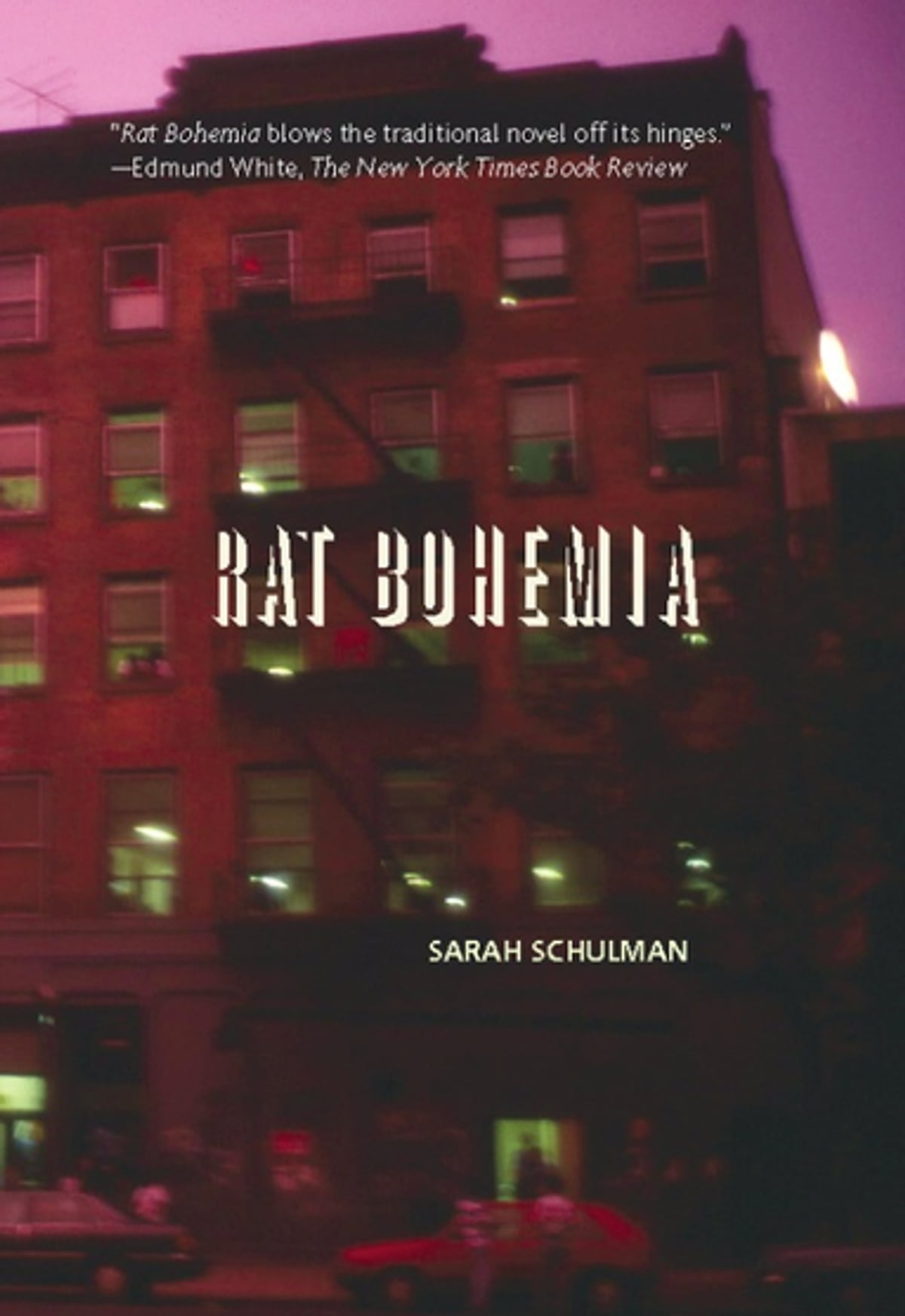
Have you spent much time in San Francisco?
Prior to its current incarnation. I’m not that familiar with it now.
When I’m in the Bay Area I like to hang out in North Beach. In my imagination, it’s still a kind of bohemian outpost, but there aren’t many berets anymore.
Well, it’s interesting in terms of the East Village. The prices for living in the East Village are ridiculous. I mean, nobody that I would want to have living in this city can afford to live here. However, people who feel like they’re outsiders come and walk around here. I see the goth kids and the trans kids and the crusties, and they’re just walking around, hanging out, even though there’s really nothing happening. But they’re happening with each other, so it still has this weird meaning to people, even though they could never afford to live here and probably couldn’t afford to eat here.
My friend, Kathy Danger, just called me this morning. We call it the “Colonial Williamsburg Effect.” It’s like the Museum of the Seventies that still coexists with East Village. Kathy’s downstairs neighbors were just raided for drugs, for selling magic mushrooms, and we’re like, “Oh, that’s so seventies! That’s still going on!” You can’t kill it. You can try, but it still has that meaning of belonging for people.
Retrospectively, I’ve realized that the job of a novelist is to show how people understand their own lives. Not how we wish people would understand their lives, not how we think they should understand their lives, but how they actually do.
And it’s accessible in language, in the books you can read from that time.
There are still some witchy places, you know. There are places like Flower Power and Enchantments where you can get tarot cards.
Something I noticed in Rat Bohemia was the absence of sentimentality in the face of grief. Rita Mae Weems, the lesbian protagonist, gives this very personal account of the effects of AIDS on her friends. But she’s funny, even irreverent.
Retrospectively, I’ve realized that the job of a novelist is to show how people understand their own lives. Not how we wish people would understand their lives, not how we think they should understand their lives, but how they actually do. And when people are in the middle of a cataclysm, but a collective cataclysm, there’s a practical side, there’s a crazy side, there are jokes. That’s how people deal with their own experiences.
I remember when Rita describes a male character in a casket who has just died of AIDS. You write, “There was this wafting of embalming fluid, and it was horrible. It didn’t smell like dead animals. It smelled like chemistry or the inside of a xerox store.” Which leads me to your most recent nonfiction book, Let the Record Show: A Political History of ACT UP New York, 1987- 1993. It’s like a distillation of things that you saw while you were involved in ACT UP at that time.
That’s a book that I had to write. I really didn’t want to, but I had to because the whole period was being misrepresented. My novels from the AIDS period already existed, but this book was not just about me. I wanted people who were being written out of history to be heard. Jim Hubbard and I had spent 18 years interviewing 188 people. We had created all this data. And despite all this evidence, these false histories were being produced and praised.
What kind of false histories are you talking about?
I talk about it in the introduction, and I don’t want to say names of other people’s work here. It’s like when the gay character is all alone and is dependent on the straight person to rescue them, which is a trope in some of our most rewarded works. This is false because gay people helped each other. Fake stories of people abandoning each other, which is really not what occurred. Stories of a handful of white individuals who single-handedly changed the world, which is impossible. It’s not just inaccurate, but impossible. It was making me crazy. And we had hoped that by creating the data, other people would rise to the occasion. But it’s very, very hard to go against iconic works that are false, that are embedded in the reward system because you’re considered a terrible person if you even question these things. They’re so over-praised. And so used to not being analyzed that simply asking, What is this work actually saying? and, What values is it actually representing? is considered a terrible assault. But actually it’s what should be happening from the beginning, because people should make whatever they want to make, but works are received in certain ways. And this gets back to the question about the difference between what’s being written and what’s being published. Things are received because they make the apparatus comfortable. I’m never questioning the artist making what they want to make, but we have to look at why certain things are elevated and other things are repressed. Unfortunately, once you do that, then the apparatus gets mad at you and then they try to punish you. It’s a vicious cycle. But that’s the reality.

And then when you fight back and you succeed, the apparatus sells your success.
I don’t know about that. I don’t know how many copies I’ve sold of Let the Record Show. I think it’s a little over 10,000. A more interesting example is the sales of Conflict Is Not Abuse. That is an interesting publishing story.
Sure.
Nobody would publish that book. I mean, nobody. I went high and I went low. I tried every element of American publishing that I had ever had a relationship with—corporate publishers, left wing publishers, university presses, feminist presses. I mean, everybody. The only place that would publish it was a small publisher in Vancouver, Canada. Now, you’re in Seattle, but in New York, people don’t even know where Vancouver is. I thought, “This book is gonna go down the rabbit hole and no one’s ever going to see it.” But I had no choice because nobody else would publish it. So Brian Lam at Arsenal Pulp published it, and today he has sold 45,000 copies. It’s been translated into French, Italian, and Spanish. It showed that even today you can beat the machine. The problem was that it was too far ahead. This is always the problem. You have something that’s too far ahead and gatekeepers are limited personalities. If they were imaginative, future-seeking people, they wouldn’t be doing what they’re doing now.
If I’m remembering correctly, Conflict Is Not Abuse responds to the Israel-Palestine conflict.
It’s a book about Palestine.
And you’re talking about the way the oppressed becomes the oppressor. Is that right?
I mean, there are a lot of ideas in there. Which is why at the beginning of the book I say this is not a book to be agreed with. I think the idea that you’re going towards is that people who are endangered—Black people killed by the police, people with AIDS in Canada subjected to HIV criminalization, Palestinians—are misrepresented as dangerous when they are actually endangered. In this way, the actual perpetrator presents themselves as though they are the victim. It’s a false positioning.
Almost all of my books have been reviewed by Publishers Weekly, but they didn’t review Conflict Is Not Abuse. That’s how on the margins Arsenal Pulp was. But because it was published in Canada, Arsenal had money from Canada Council. In the United States, there are no federal funds for the arts, really. There’s a very tiny map and most people don’t have any government money to help create
new ideas. But in Canada they do because it’s a country with a lot of oil and very few people. And if they didn’t fund Canadian culture, there wouldn’t be any, because it would be steamrolled by Hollywood and America. So, because it was a Canadian press, they had money from Canada Council to send me on a book tour. If it had been published in America, that never would’ve happened. So they sent me on a Canadian book tour.
I started in Montreal and I moved west and I had quite large audiences from the beginning. Very quickly I noticed that the audiences were very young. People in their twenties who were concerned about what’s now called “cancel culture.” But I didn’t really know about it. I wasn’t thinking about that. I wasn’t writing about that. But they were experiencing this kind of shunning and incredibly inflated, escalated attacks about nothing at an intense emergency level. And that was why they were coming. So this whole dialogic conversation was something that could only happen in person. And by the time I got to the West Coast, I had 400 people. This was all internet. I know a little internet, but a lot of it is beyond me. You know, I’m old. So a lot of this was going on in spheres that I don’t even know how to access.
Interestingly, there was so much buzz or whatever about these ideas that Publishers Weekly ended up having to review it five months after publication, which never happens. It’s supposed to be three months before the book is published. But it became a phenomenon. The machine got beat, but nobody tried to beat it. It just happened because it was on the nose. And with Gentrification of the Mind, it’s hard to understand why it’s so popular now. I mean, I couldn’t get it published for 10 years. I finally got it published. And it’s cited all the time. I don’t know why now.
I have this other book called Ties That Bind, which is about homophobia in the family. That’s another book I couldn’t publish for 10 years. I wrote four books during those 10 years. And then they all got published at once. I mean, the New Press kind of printed it. There were no readings. It just existed. Now people are quoting it, now people are reading it. People who, I don’t know why—I don’t know what’s happening in people’s families. I guess that young people have expectations that are beyond the behavior of their families, even though it’s all on a very different scale than what I was talking about. But they’re relating to it. Sometimes these things happen and I don’t totally understand why.
I’d say the issues that you’re writing about in Ties That Bind are universal and ongoing. There’s resonance with so many queer people’s experiences of feeling estranged from our families and lacking a support network.
It’s about to come out in France and it’ll give me a chance to actually meet with and talk to readers about what they make of the book, which is an experience I never had with the American edition.
I wanted to ask you about one of your plays. You wrote about Carson McCullers (Lula Carson Smith), who had her major moment during publishing’s postwar boom, and who seems wildly bohemian. It’s called Carson McCullers (Historically Inaccurate), and I’m curious why you have “Historically Inaccurate” in parentheses.
At that time, most of the theaters in New York City had all male, all white seasons. It was very hard for any woman playwright to get her play produced. I was afraid that they were going to find a way to take it down because all the critics were men. And in fact, they did take it down. But I was trying to protect myself. I thought that they would complain that it wasn’t historically accurate. I put “Historically Inaccurate” so that they couldn’t say it was not historically accurate. Actually, it was so hyper accurate and so ahead of how people understood Carson McCullers. At the time—I wrote it in 2000—I perceived that she was what we now call trans, but that she didn’t have language for it. And I wrote the play saying that, and this was an unacceptable idea. This is before the trans revolution, before Transparent and before popular cultural trans.
At the time, her estate was controlled by the same people who had been her agents when she was alive. They were people in their eighties. They were so angry that I was making this claim that they actually didn’t show up on opening night. And there was a row of empty seats in the middle of the theater. Then their machine, their apparatus, started writing things about how stupid and terrible the play was. But years later, because of Transparent—and whatever people think of Transparent, it did change the world—I was able to write an article in the New Yorker explaining, and this is like 15 years after the play was trashed, that Carson McCullers was trans, and that legitimized the idea. And then the estate, which was now run by new people because the old people had died, invited me to give the keynote at her centenary. I went and I said she was trans. Her psychiatrist had just died at 103, but her surviving partner was there, and I asked her, Do you think I’m on the right track? And she said, Keep going.
Is Carson McCullers someone that influenced you as a person or writer in some way?
Well, as a person, she was a mess. She died of alcoholism at age 50. I met a lot of people who knew her. I met Tobias Schneebaum, the writer who knew her. And Anne Truitt, the sculptor who knew her, and every story that anyone had about her was crazy. You know, she showed up with four drunken sailors. She sat in the corner in her kimono and wouldn’t talk to you. It was like no one had a story about her being nice or helping somebody. So she had all kinds of conflicts.
I think her writing is incredible, absolutely incredible. And it’s too good to influence me. The only writer I’ve ever read who can do what she can do is Caryl Phillips. He’s a writer from St. Kitts and he’s also able to inhabit any kind of person from any perspective. It’s phenomenal. But, you know, that’s the gold standard.

